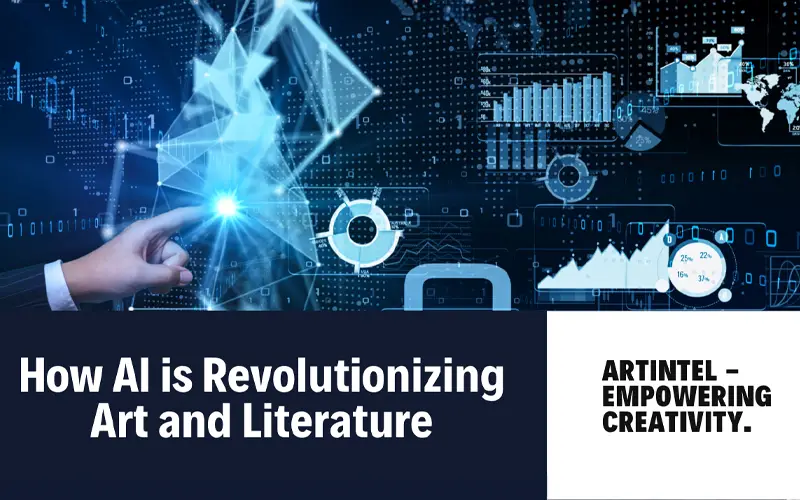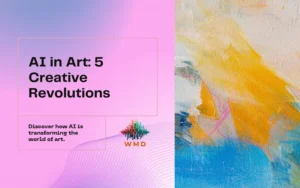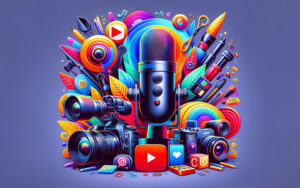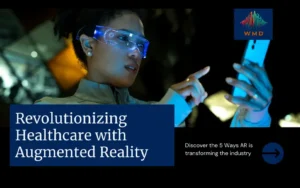In an era where the fusion of technology and creativity is more pronounced than ever, AI-powered creativity emerges as a revolutionary force, reshaping the realms of art and literature. This transformative journey into the new frontier of digital creativity challenges our traditional notions of authorship, copyright, and the very essence of creative expression. As we delve into this fascinating intersection of artificial intelligence and human ingenuity, we stand at the cusp of a new era where the possibilities are as limitless as our imagination.
Introduction to AI in Creative Domains
The advent of AI in creative fields marks a significant milestone in the evolution of art and literature. With AI’s capability to analyze vast datasets and generate outputs that mimic human creativity, artists and writers are exploring new horizons of expression. This exploration is not just about the end product but also about the process of creation, which now integrates human vision with machine intelligence.
The Evolution of AI in Creative Fields
Historically, the application of AI in creativity was limited to experimental projects. However, the last decade has seen a surge in the use of AI tools that can create artwork, compose music, and write prose. Notable examples include AI-generated paintings that have been auctioned for substantial amounts and AI-written novels that challenge our perceptions of storytelling.
Implications for Creativity
The debate around AI-Powered Creativity centers on a pivotal question: Can machines be truly creative? While purists argue that AI lacks the emotional depth and understanding inherent to human creativity, others see AI as a tool that amplifies human creativity, offering new pathways for exploration and expression.
Copyright and Legal Considerations
As AI-generated works gain prominence, copyright issues come to the fore. The legal framework struggles to keep pace with technological advancements, raising questions about ownership and copyright in the context of AI-created content. This section will explore current legal standings and speculate on future directions.
Authorship in the AI Era
The concept of authorship is undergoing a radical transformation. AI collaboration introduces a dual authorship model, where the creative output is a product of both human intention and machine execution. This redefinition prompts us to reconsider the role of the human creator in the age of AI-generated art and literature.
Ethical Considerations
The ethical implications of employing AI in creative processes are manifold. From concerns about originality and authenticity to the potential for misuse, the ethical use of AI in creativity demands careful consideration and responsible action from both developers and creators.
The Future of AI-Powered Creativity
Looking ahead, AI’s role in art and literature is poised for exponential growth, promising new forms of expression and storytelling. As AI technology evolves, so too will its capacity to collaborate with humans, paving the way for unprecedented creative endeavors.
The journey into AI-powered creativity is just beginning. We invite you to explore the potential of AI in your creative pursuits. Subscribe to our newsletter for the latest insights and trends in AI and creativity, and join us at the forefront of this innovative frontier.
FAQs
Q: Can AI create art without human input? A: While AI can generate art based on its programming and datasets, the creative direction and interpretation often require human input to guide the process and give it meaning.
Q: Who owns the copyright to AI-generated works? A: Copyright issues surrounding AI-generated works are complex and vary by jurisdiction. Currently, there’s a push for laws that clearly define ownership and copyright for AI-created content.
Q: How does AI affect the future of AI-Powered Creativity? A: AI is expected to enhance human creativity, offering new tools and methodologies for creative expression. Its impact will likely be seen in the emergence of new art forms and narratives that blend human and machine creativity.
AI-powered creativity represents a frontier teeming with possibilities, challenges, and questions. As we navigate this evolving landscape, the collaboration between human ingenuity and artificial intelligence promises to redefine the boundaries of art and literature. In this new era, creativity is not just about what we can imagine but also what we can achieve together with AI.
References:
How Generative AI Is Changing Creative Work. (2023). Harvard Business Review. Retrieved from Harvard Business Review
Generative AI and copyright: principles, priorities and practicalities. (2023). Journal of Intellectual Property Law & Practice, 18(12), 841-853. Retrieved from https://academic.oup.com/jiplp/article/18/12/841/7331468
AI-Powered Creativity – To Learn More:
Virtual Reality in Education: 7 Revolutionary Ways it’s Unleashing the Future of Education





